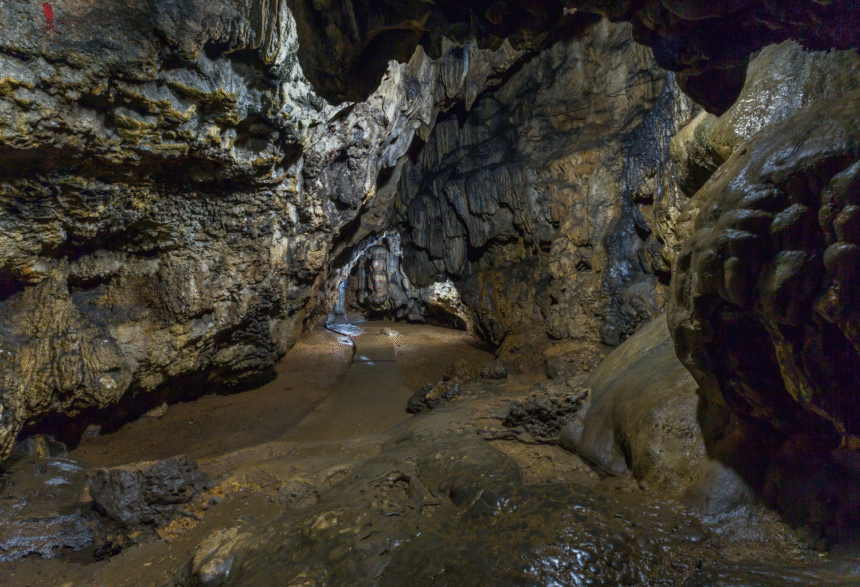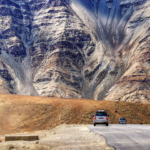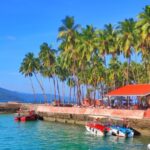Meghalaya, known as the “Abode of Clouds,” is a paradise not only for lush landscapes, waterfalls, and living root bridges but also for its mysterious caves. With over 1,700 explored caves, Meghalaya is India’s ultimate caving destination, drawing adventurers, geologists, and nature lovers alike.
These caves are spread across Khasi Hills, Jaintia Hills, and Garo Hills, offering breathtaking limestone formations, stalactites, stalagmites, and underground rivers. Whether you’re a thrill-seeker or a curious traveler, exploring the caves in Meghalaya promises an unforgettable experience.
Major Caves in Meghalaya
1. Mawsmai Cave (Cherrapunji)
- Location: Near Cherrapunji, East Khasi Hills
- Highlights:
- One of the most famous caves, easily accessible for tourists.
- Limestone formations illuminated by artificial lighting.
- Short and family-friendly, ideal for beginners.
- Best For: Families, beginners, and casual explorers.
2. Liat Prah Cave (Jaintia Hills)
- Location: Shnongrim Ridge, Jaintia Hills
- Highlights:
- Longest natural cave in India, stretching over 30 km.
- Famous for the “Aircraft Hangar,” a massive passage.
- A paradise for professional cavers and researchers.
- Best For: Experienced adventurers and geologists.
3. Siju Cave (Garo Hills)
- Location: Near Simsang River, South Garo Hills
- Highlights:
- Known as the “Bat Cave” due to its large bat population.
- Houses stalactites, stalagmites, and river passages.
- One of India’s oldest limestone caves.
- Best For: Wildlife enthusiasts and history lovers.
4. Krem Lymput (Jaintia Hills)
- Location: Nongjri, near Jowai
- Highlights:
- Around 6 km long cave system.
- Famous for the Hall of the Kings, a stunning limestone gallery.
- Requires a local guide to explore safely.
- Best For: Adventure seekers and offbeat travelers.
5. Krem Mawmluh (Cherrapunji)
- Location: Near Sohra (Cherrapunji)
- Highlights:
- Fifth-longest cave in India, about 7 km long.
- Mix of sandstone and limestone structures.
- Known for waist-deep water passages and slippery trails.
- Best For: Adventure caving and thrill seekers.
6. Krem Puri (Mawsynram)
- Location: Near Mawsynram, West Khasi Hills
- Highlights:
- Longest sandstone cave in the world, measuring 24.5 km.
- Discovered in 2016 by cavers from Meghalaya Adventurers’ Association.
- Contains fossils of dinosaurs and marine life.
- Best For: History lovers, explorers, and professional cavers.
Best Time to Visit Caves in Meghalaya
- Winter (November – February): Ideal for caving, cool and dry weather.
- Monsoon (June – September): Avoid, as caves flood with rainwater.
- Summer (March – May): Pleasant for exploration, but humid inside caves.
Tips for Cave Exploration in Meghalaya
- Always hire a local guide for safety and directions.
- Carry headlamps, torches, and extra batteries.
- Wear comfortable clothes and non-slippery shoes.
- Avoid caving during the monsoon season.
- Respect the ecosystem – do not litter or disturb wildlife.
How to Reach Meghalaya Caves
- Nearest Airport: Shillong Airport (Umroi) or Guwahati Airport (Assam).
- Nearest Railway Station: Guwahati Railway Station.
- From Shillong, hire taxis or join guided tours to reach caves across Khasi, Jaintia, and Garo Hills.
Why Visit Caves in Meghalaya?
- Experience India’s longest and deepest cave systems.
- Witness unique geological formations and fossils.
- Adventure-packed activity for thrill seekers.
- Perfect blend of nature, history, and culture.
Conclusion
Exploring the caves in Meghalaya is like stepping into a hidden world beneath the hills. From the tourist-friendly Mawsmai Cave to the adventurous Krem Mawmluh and the legendary Liat Prah, each cave tells its own story of nature’s artistry.
If you’re planning a Meghalaya trip, don’t just stop at waterfalls and living root bridges—venture underground and witness the mystical charm of Meghalaya’s caves.









